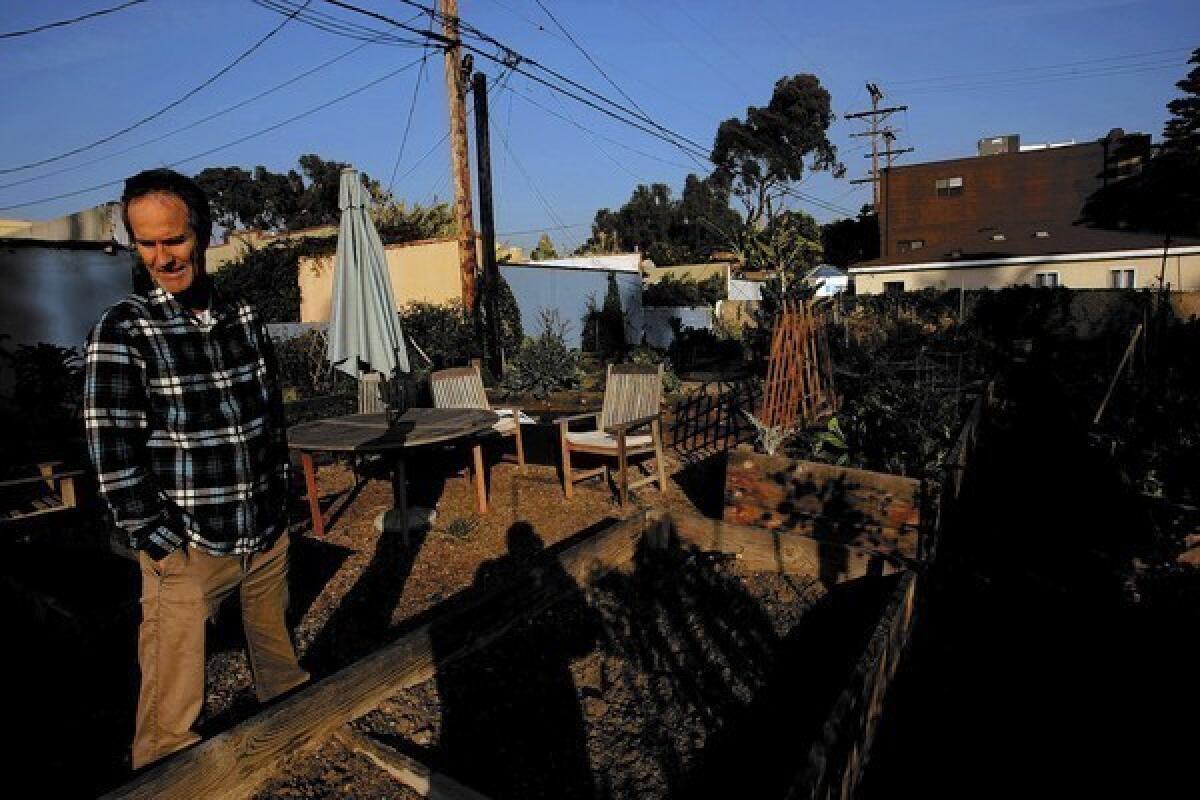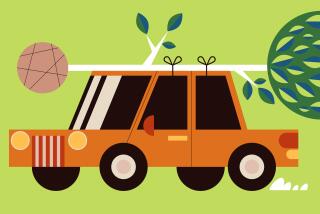Venice Community Garden must pull up roots by end of January

- Share via
Spring-like weather hasn’t brought smiles at the Venice Community Garden. The locals who tend the garden’s 54 plots recently learned that they have until the end of the month to clear out.
With real estate prices rising, gardeners at the privately owned site learned more than a year ago that the property would go on the market someday.
“But we were thinking in 10 years,” said master gardener Kip Wood, one of the people who founded the community garden about four years ago.
The number of community gardens in the Los Angeles area has grown to more than 100. The wave of popularity is so strong that leaders of the Los Angeles Community Garden Council have lost track of an exact count. The growth spurt began around 2008, when the recession renewed interest in homegrown food, but the trend shows no sign of slowing down even as the economy improves.
Waiting lists at the most popular community gardens can run five to six years — and that can be at bigger gardens with hundreds of spaces.
How many community gardens are as susceptible as Venice to closure? The majority of Los Angeles’ community gardens are built on land owned by a utility or a city entity such as the Department of Water and Power or the Department of Recreation and Parks. Community gardeners often are protected by longer leases and the fact that the land cannot be developed because it sits under power lines. Only a few community gardens are on private property.
In Venice, Wood said gardeners have no hard feelings toward the owner, Don Novack, a real estate developer and co-owner of Hal’s Bar & Grill in Venice. Novack approached the group and asked for help finding a buyer who could donate the land to the garden. But that’s unlikely to happen, and with no place to relocate, the garden probably will just close.
“It’s hard enough to get people to come to cleanup days, much less come up with $2.5 million,” Wood said.
Community gardens, eyeing the future, send down roots
Three ways community gardeners have secured their future:
Raymond Avenue: Five years ago, the community garden on Raymond Avenue in the West Adams neighborhood of Los Angeles opened. Founder Julie Burleigh, who lives across the street, signed a simple agreement with the owner and began constructing beds. When the owner said she was thinking of selling the land about two years ago, Burleigh approached the Los Angeles Neighborhood Land Trust to see if the nonprofit could help.
It came to light that the property had a back-tax bill, according to the trust, and most likely would be auctioned off to pay for it. The trust found a state law that allows nonprofits to pull property out of the auction queue and work with the county to pay back taxes. “The property isn’t free, but it’s not being sold to the highest bidder either,” said Alina Bokde, the trust’s executive director.
By last February, the trust owned the site in perpetuity.
Elysian Valley: The Elysian Valley Community Garden opened in November, also on private land. But its owner, Cyndi Hubach, is the founder and a gardener herself. In 2005, the retired TV producer bought a building that included a quarter-acre empty lot across the street. While taking an urban sustainability class at Antioch University in L.A., she realized she could practice what she was learning.
“Everyone was talking about community gardens,” she said. “I thought: I’ve got a piece of land. That has to be the hardest part, right?”
She gave a five-year lease to the community garden council, providing access to nonprofit grants and donations. The council handles all the bookkeeping. About two years passed from the planning to the opening, and in between, organizers raised money for the big-ticket items: a fence and water hookups. Hubach pays the property taxes.
NOMADgardens: One new approach to community gardens on private land can be found in San Francisco. With 200 plots, NOMADgardens is scheduled to open this month in the Mission Bay neighborhood as San Francisco’s largest community garden. When the owner wants to develop the land, the plots — all planted in movable 2-by-4-foot metal raised beds — can be hoisted by forklift and trucked to a new site.






